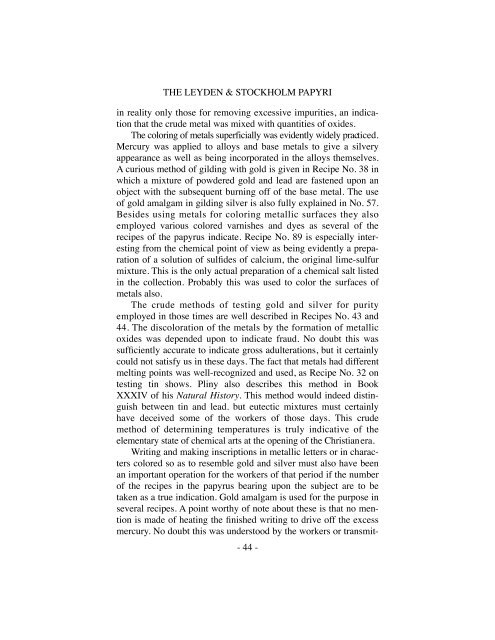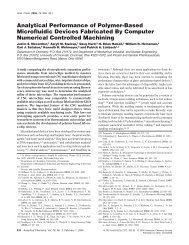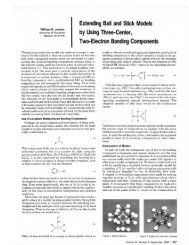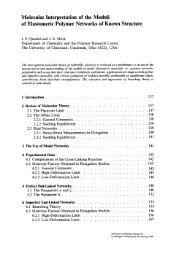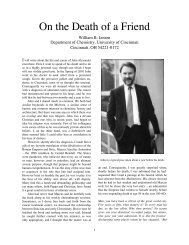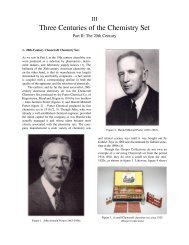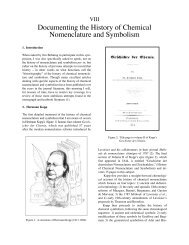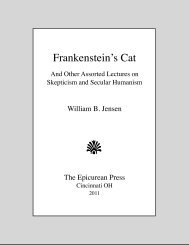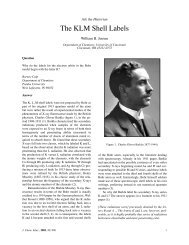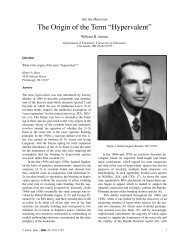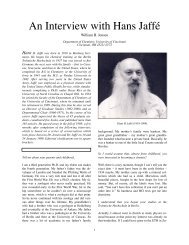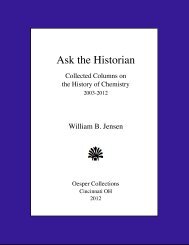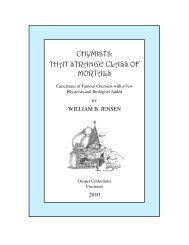The Leyden and Stockholm Papyri - University of Cincinnati
The Leyden and Stockholm Papyri - University of Cincinnati
The Leyden and Stockholm Papyri - University of Cincinnati
Create successful ePaper yourself
Turn your PDF publications into a flip-book with our unique Google optimized e-Paper software.
THE LEYDEN & STOCKHOLM PAPYRI<br />
in reality only those for removing excessive impurities, an indication<br />
that the crude metal was mixed with quantities <strong>of</strong> oxides.<br />
! <strong>The</strong> coloring <strong>of</strong> metals superficially was evidently widely practiced.<br />
Mercury was applied to alloys <strong>and</strong> base metals to give a silvery<br />
appearance as well as being incorporated in the alloys themselves.<br />
A curious method <strong>of</strong> gilding with gold is given in Recipe No. 38 in<br />
which a mixture <strong>of</strong> powdered gold <strong>and</strong> lead are fastened upon an<br />
object with the subsequent burning <strong>of</strong>f <strong>of</strong> the base metal. <strong>The</strong> use<br />
<strong>of</strong> gold amalgam in gilding silver is also fully explained in No. 57.<br />
Besides using metals for coloring metallic surfaces they also<br />
employed various colored varnishes <strong>and</strong> dyes as several <strong>of</strong> the<br />
recipes <strong>of</strong> the papyrus indicate. Recipe No. 89 is especially interesting<br />
from the chemical point <strong>of</strong> view as being evidently a preparation<br />
<strong>of</strong> a solution <strong>of</strong> sulfides <strong>of</strong> calcium, the original lime-sulfur<br />
mixture. This is the only actual preparation <strong>of</strong> a chemical salt listed<br />
in the collection. Probably this was used to color the surfaces <strong>of</strong><br />
metals also.<br />
! <strong>The</strong> crude methods <strong>of</strong> testing gold <strong>and</strong> silver for purity<br />
employed in those times are well described in Recipes No. 43 <strong>and</strong><br />
44. <strong>The</strong> discoloration <strong>of</strong> the metals by the formation <strong>of</strong> metallic<br />
oxides was depended upon to indicate fraud. No doubt this was<br />
sufficiently accurate to indicate gross adulterations, but it certainly<br />
could not satisfy us in these days. <strong>The</strong> fact that metals had different<br />
melting points was well-recognized <strong>and</strong> used, as Recipe No. 32 on<br />
testing tin shows. Pliny also describes this method in Book<br />
XXXIV <strong>of</strong> his Natural History. This method would indeed distinguish<br />
between tin <strong>and</strong> lead. but eutectic mixtures must certainly<br />
have deceived some <strong>of</strong> the workers <strong>of</strong> those days. This crude<br />
method <strong>of</strong> determining temperatures is truly indicative <strong>of</strong> the<br />
elementary state <strong>of</strong> chemical arts at the opening <strong>of</strong> the Christian era.<br />
! Writing <strong>and</strong> making inscriptions in metallic letters or in characters<br />
colored so as to resemble gold <strong>and</strong> silver must also have been<br />
an important operation for the workers <strong>of</strong> that period if the number<br />
<strong>of</strong> the recipes in the papyrus bearing upon the subject are to be<br />
taken as a true indication. Gold amalgam is used for the purpose in<br />
several recipes. A point worthy <strong>of</strong> note about these is that no mention<br />
is made <strong>of</strong> heating the finished writing to drive <strong>of</strong>f the excess<br />
mercury. No doubt this was understood by the workers or transmit-<br />
- 44 -


